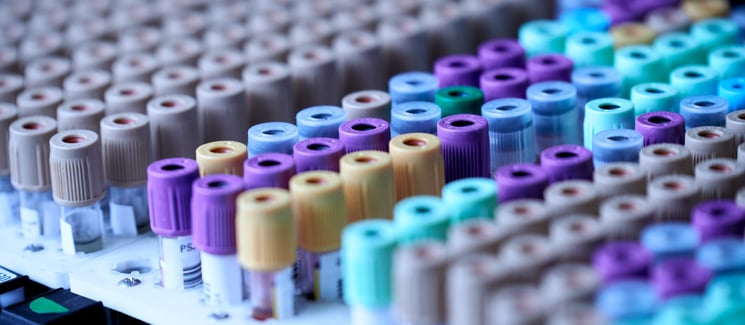Sample management is a process with many moving parts.
From response times to staff costs, to sample conservation performance and throughput – the sample management ecosystem is complex. There are multiple steps and considerations to ensure the samples produced are usable, and can support vital research processes.
Get it right, and you’ll reduce the risk of error, free up valuable storage space, increase visibility, ensure the validity of your results, and more.
But, get it wrong, and it could cost you millions – not to mention the huge delays caused to project timelines.
Today, with the COVID-19 pandemic having pulled Biotech and Pharmaceutical companies further into the spotlight, the pressure to deliver valid samples at speed has never been greater.
Losing or compromising samples is not an option. So here, we’ll outline the real cost of unusable samples, and explore how you can optimise sample management to reduce that risk, and increase the validity of research.
What makes a sample ‘unusable’?
With tight timeframes and costly processes, getting sample storage right is imperative. But human error is inevitable, and the cost of even the slightest mistake can be tremendous.
A number of factors can contribute towards making a sample unusable:
- Incorrect storage conditions. When working in a laboratory setting, it is of course common to deal with multiple samples on any one occasion; but each of those samples could have different requirements for storage. From temperature to humidity levels, if a sample is not stored in the correct conditions, it is at risk of degrading, affecting further research and analysis unless it is routinely quality checked.
- Inaccurate labelling. The labelling of samples is one of the main areas subject to human error in the sampling process. With handwritten labels, you risk illegibility, causing samples to be misplaced, stored in an inappropriate location, or simply left unidentifiable. The risk of mixing up samples also increases, which jeopardises the validity of results.
- Untracked movements. Many materials, such as siRNA, some purified proteins, and even some small molecules degrade with repeated freeze-thaw cycles. With strict storage requirements, moving the samples out of their optimum conditions increases the freeze-thaw count, causing the sample to spoil and, again, making it unusable for the remainder of the experiment.
- Unmonitored expiry or retention dates. Many critical reagents, human-derived materials or legally bound project samples have set expiry dates or retention periods, after which the sample is no longer viable. Without tracking these dates, such samples can compromise results, and potentially breach service level agreements, too.
Given the considerable expense of the sample management lifecycle, what’s key is ensuring you’re getting the best possible results from your research.
What kind of impact can you expect to see, though, should any of the above become a common occurrence?

What is the real cost of unusable samples?
The true cost of unusable samples extends beyond your financial investments. Poor sample management can jeopardise an entire project, damage your reputation, and even result in the need to repeat whole studies and programmes to meet validity requirements.
Spoiling or misplacing samples can lead to:
- Project timeline delays. Trials and experiments often face tight timelines, with an aim to roll out drug or treatment development as soon as possible. If you have to redo trials or replace samples, this creates substantial delays in your timeline.
- Invalid results. Ensuring the validity of results is critical to the success of any project. Misplacing or compromising samples can lead to educated guesswork by the chemist, decreasing the validity of analysis.
- Increased financial costs. Conducting trials and experiments using samples is an expensive and time-consuming process. With sample vials costing over £1,000, replacing misplaced or spoiled reagents incurs a significant cost on your project. Inefficient storage also increases the number of freezers needed, taking up valuable floor space, increasing power consumption and driving your costs even higher.
- Potential governance concerns. Tracking the chain of custody is key to ensuring compliance with FDA regulations. If invalid samples are used, or movements fail to be tracked, not only will you have to repeat the trial at a considerable cost, but you could also face fines for failing to supply important information.
- Lost time and energy. Professionals working on trials in Biotech and Pharmaceuticals need to focus their valuable time and efforts into developing potentially life-changing, and commercially viable, products. Failing to have an efficient sample management system in place means more wasted time looking for samples, or repeating processes, instead of analysing and tracking results.
Of course, human error is inevitable, and the chances of never spoiling or misplacing a sample are incredibly slim. However, having access to the right automation, screening and tracking software can help limit human error and optimise processes for maximum efficiency.
How can you optimise sample management?
Optimising sample management starts with tracking. Tracking movements, storage, expiry dates and labelling ensures samples are kept in the right conditions, are easily accessible, and don’t end up in the wrong place.
Digitalising processes is key to optimising your projects. Instead of using handwritten labels, opt for unique barcodes that are easily identifiable, error-proof, and simple to use. This will help reduce the amount of samples lost to illegible handwriting, or unidentifiable contents.
At Titian, our Mosaic software supports critical screening operations through data integrity, outsourcing, flexibility, traceability and fast turnaround. Our combined 500 years of expertise and consultancy services, paired with our game-changing software helps automate processes, ensure reliable results, and track movements at every stage of the sample management lifecycle.
With the right software supporting your projects, you can free up valuable storage space, increase visibility, gain easy and accurate access to samples, and ensure the validity of results, every step of the way.
